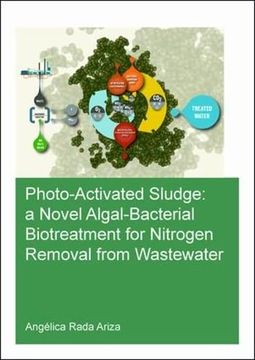Share
Photo-Activated Sludge: A Novel Algal-Bacterial Biotreatment for Nitrogen Removal From Wastewater (Ihe Delft phd Thesis Series)
Angélica Rada Ariza (Author)
·
Crc Press
· Paperback
Photo-Activated Sludge: A Novel Algal-Bacterial Biotreatment for Nitrogen Removal From Wastewater (Ihe Delft phd Thesis Series) - Angélica Rada Ariza
£ 82.79
£ 91.99
You save: £ 9.20
Choose the list to add your product or create one New List
✓ Product added successfully to the Wishlist.
Go to My WishlistsIt will be shipped from our warehouse between
Thursday, June 06 and
Tuesday, June 11.
You will receive it anywhere in United Kingdom between 1 and 3 business days after shipment.
Synopsis "Photo-Activated Sludge: A Novel Algal-Bacterial Biotreatment for Nitrogen Removal From Wastewater (Ihe Delft phd Thesis Series)"
Nitrogen rich wastewaters (10-400 mg N L-1) are usually produced by municipal, industrial and agricultural wastes, such as effluents from anaerobic treatments. These represent a risk to the environment due to the high nutrient concentrations (nitrogen and phosphorous), which can cause eutrophication of water bodies, deteriorating the quality of the ecosystems. As a solution, the potential nitrogen removal capacity of a novel bio-treatment system, namely the Photo-Activated Sludge (PAS), which is composed of microalgae and bacteria consortia, is presented in this thesis. This novel bio-treatment is based on the symbiosis between microalgae, nitrifiers and heterotrophic bacteria (microalgal-bacterial consortia). Experimental work using photobioreactors for the cultivation of microalgae and bacteria under sequencing batch conditions showed that microalgal-bacterial consortia can remove ammonium 50% faster than solely microalgal consortia. The increase in ammonium removal rates was due to the action of nitrifying bacteria, supplied with oxygen produced by algae. Nitrification was the main ammonium removal mechanism within the microalgal-bacterial biomass, followed by algal uptake and nutrient requirements for bacterial growth. Carbon oxidation and denitrification were the main removal mechanisms for organic carbon. Hence, the role of algae within the microalgal-bacterial system is to provide oxygen to support the aerobic processes. The microalgal-bacterial system offers the possibility of reducing the hydraulic retention time, which can decrease the large area requirements often demanded by algal systems.
- 0% (0)
- 0% (0)
- 0% (0)
- 0% (0)
- 0% (0)
All books in our catalog are Original.
The book is written in English.
The binding of this edition is Paperback.
✓ Producto agregado correctamente al carro, Ir a Pagar.

